A Gravestone Doji candle indicates a battle between buyers and sellers and is considered bearish. Our 1,553 test trades prove it is the third most profitable candle pattern. But it does not work as most traders believe.
Is the Doji pattern profitable or accurate? I tested Gravestone Dojis on 1,553 trades spanning bull and bear markets on 575 years of data to discover the facts.
RESEARCH SUMMARY
- The Gravestone Doji is the 3rd best performing candle, with an accuracy rate of 57%.
- The Gravestone Doji pattern does not predict market direction with certainty.
- A 0.65% profit per trade and a low Sortino ratio of 0.40 are typical outcomes when trading the Gravestone Doji pattern.
- The Gravestone Doji has the 4th best reward/risk ratio of all candles, 1.12:1.
What Is a Gravestone Doji?
The Gravestone Doji is a Japanese candlestick pattern used in the technical analysis of stocks, currencies, commodities, and bonds. The Gravestone Doji has similar opening and closing prices that appear at or close to the day’s price low and a long high wick. This candle gets its name because it resembles a gravestone.
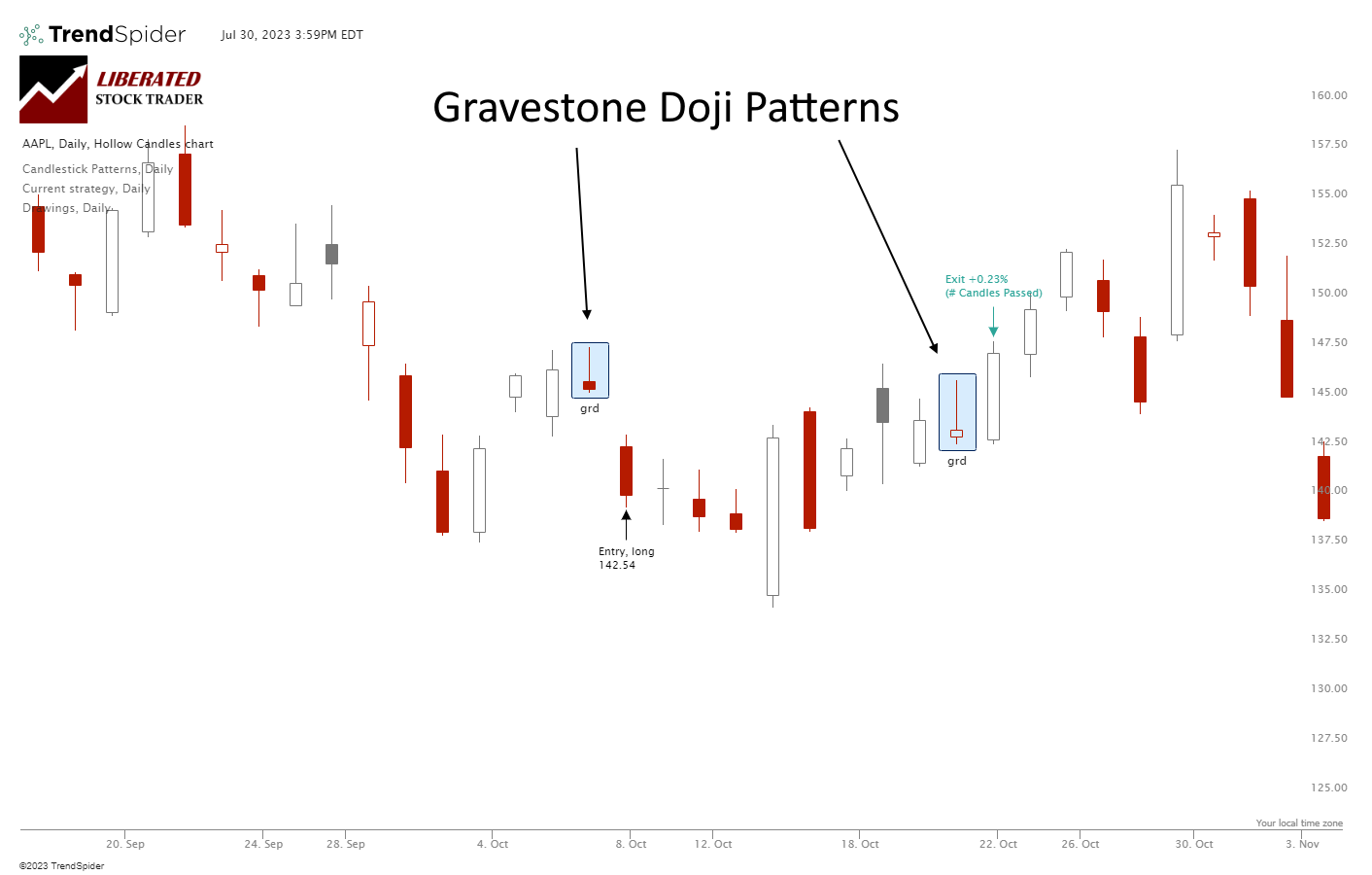
What Does a Gravestone Doji Candle Mean?
The occurrence of a Gravestone Doji is considered a bearish signal, indicating that a stock price may soon undergo a bearish reversal. It forms when a candle’s opening, low, and closing prices are the same or about the same price. This pattern often signals a downturn and could indicate the end of a bullish trend. As the name implies, the gravestone signifies the end of an uptrend.
But is this candle bearish? Our in-depth research will put it to the test!
Types of Doji Candle
Did you know there are four main types of Doji candles? These include the Standard, Long-legged, Dragonfly, and Gravestone. The Standard Doji looks like a cross, while the Long-legged Doji, also known as a “Rickshaw Man,” has longer wicks which suggest significant price movement during the period, but with a close near the opening price. The Dragonfly Doji shows a session where both opening and closing prices are at the day’s high, whereas the Gravestone Doji is the opposite, with open and close prices at the day’s low.
Gravestone Doji Explained
The Gravestone Doji candlestick pattern takes shape when a trading session’s opening, closing, and low prices are almost identical. This kind of candle looks like a gravestone, with a tall wick on the top. It indicates that buyers failed to push the prices up, and the sellers were able to bring them back down to around the opening price at the end of the trading session.
The primary market action behind a Gravestone Doji is an initial bullish move followed by a significant bearish reversal.
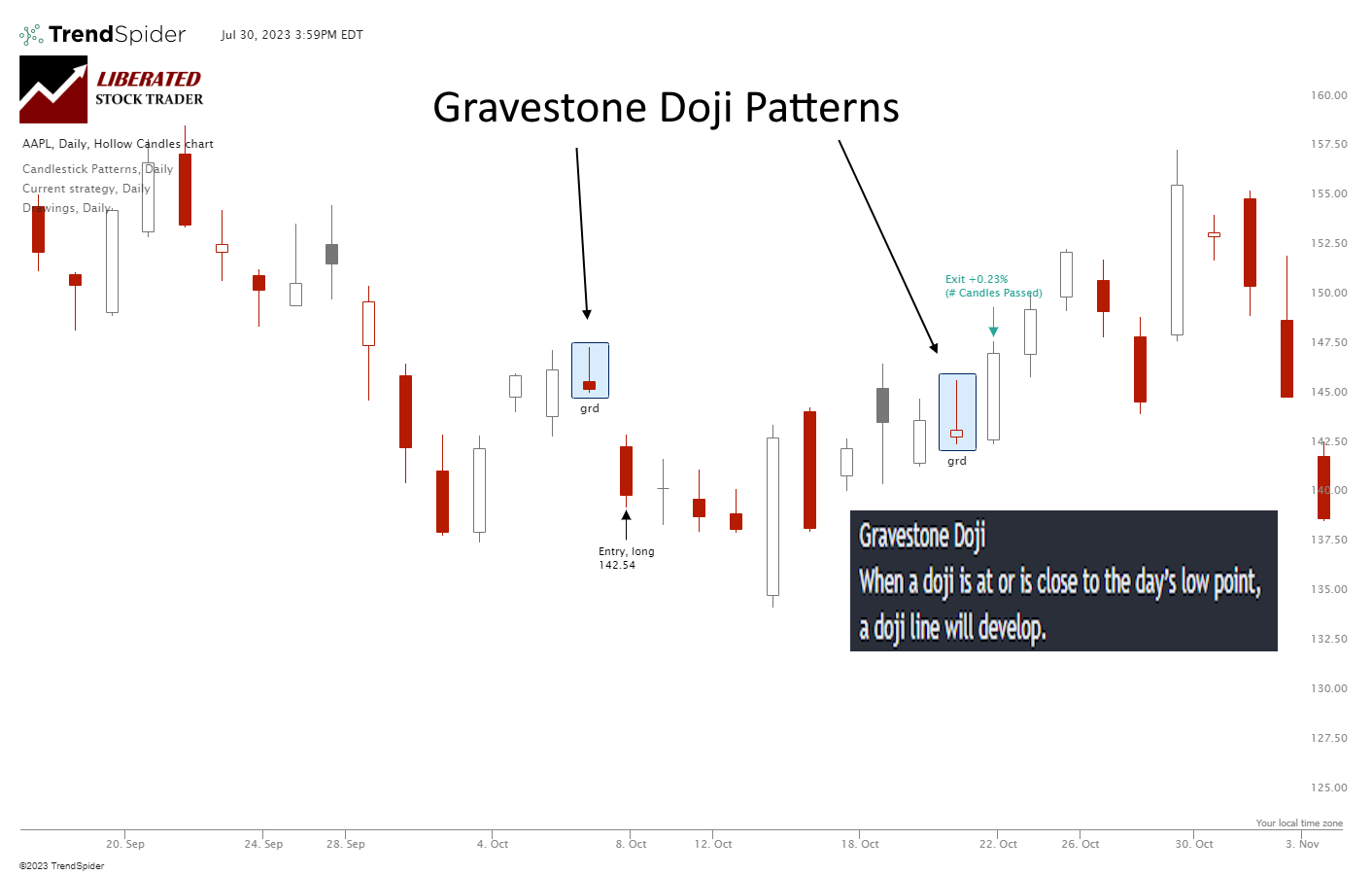
Candle Pattern Recognition with TrendSpider
The Gravestone Doji candle supposedly indicates bearish sentiment and a potential trend reversal, but our testing reveals that it is not.
Gravestone Doji Formations
The psychology behind the Gravestone Doji revolves around a shift in market sentiment from bullish to bearish. At the start of the session, buyers are in control, driving the price upwards. This upward movement indicates positive sentiment or bullishness among traders.
However, as the session progresses, sellers enter the market and overpower the buyers, causing the price to fall back to its opening level. This shift represents a change in market sentiment from bullish to bearish. A Gravestone Doji’s appearance suggests buyers are losing control and sellers are starting to dominate, potentially signaling a future downward trend.
In essence, the Gravestone Doji reflects a tug-of-war between buyers and sellers, with sellers ultimately gaining the upper hand.
Is a Gravestone Doji a Bearish Reversal Pattern?
No, according to our testing, the Gravestone Doji is not a bearish reversal pattern. In fact, the Doji has a win rate of 57%, meaning it is 57% Bullish and 43% bearish. The results from 1,553 tested trades show that the Doji does not conclusively indicate a market reversal. In fact, the Doji has a win rate of 57%, meaning it is 57% Bullish and 43% bearish.
As you can see in the chart above, there are two Gravestone Dojis; the first occurs at the end of an uptrend and does signal a price reversal. The second one also occurs in an uptrend, but the following day, prices do not reverse; they continue upwards. This unreliability is reflected in our testing, which indicates that Gravestone Dojis only indicates a bearish reversal 43% of the time.
My thorough testing awarded TradingView a stellar 4.8 stars!
With powerful stock chart analysis, pattern recognition, screening, backtesting, and a 20+ million user community, it’s a game-changer for traders.

Whether you're trading in the US or internationally, TradingView is my top pick for its unmatched features and ease of use.
Explore TradingView – Your Gateway to Smarter Trading!
Trading a Gravestone Doji Candle?
When trading a gravestone doji, one needs to be aware that this pattern moves in a bullish direction 57% of the time, regardless of whether it occurs in an up or downtrend. Also important is that this pattern does not indicate a particular reversal over a 10-day period; the data suggests one should go long.
Trading Gravestone Dojis can be very tricky since they provide reliable predictive signals only 57% of the time. When trading a Gravestone Doji, the first step is to observe the overall market trend. Once you’ve identified the trend, you should confirm it by looking at other indicators like moving averages or support and resistance levels.
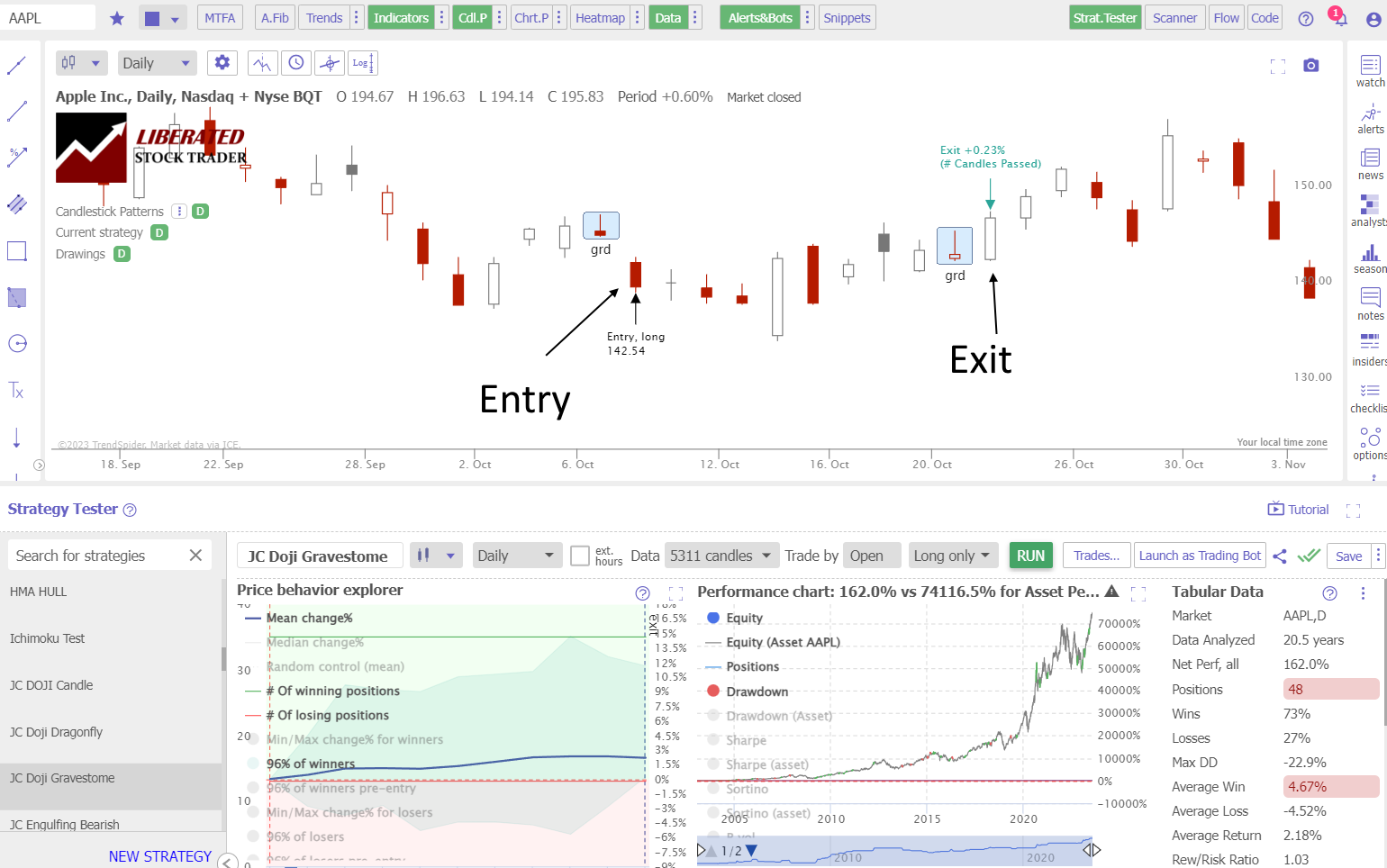
Auto-Trade Candles with TrendSpider
After confirmation of the current trend, enter the trade and consider a stop loss to limit risk. When trading a Gravestone Doji, it’s important to use confirmations in the form of reliable candle patterns, such as an Inverted Hammer or a Bearish Marubozu. Furthermore, reliable indicators such as the Relative Strength Index (RSI), Rate of Change (ROC), or Volume can be used to determine if the trend will likely reverse or continue.
My Gravestone Doji Candle Testing
Using TrendSpider, I tested 30 Dow Jones Industrial stocks over a 20-year span. This amounted to 1,553 Gravestone Doji trades and 575 years of data. The Gravestone Doji must be fully formed to enter a trade, and the buy signal must be executed on the next trading day’s open price. Each trade was exited at the open exactly ten days later.
Candle Testing Methodology:
- Pattern: Gravestone Doji
- 30 DJIA Stocks
- Daily Chart
- Strategy: Buy Long
- Test Period: 2003 to 2023
- Buy at the next open
- Exit after 10 days
- Pattern Recognition performed by TrendSpider
Backtesting the Gravestone Doji
I found using TrendSpider to identify and execute trades to be fast and accurate. If you want to independently test candlestick patterns and strategies, please follow the instructions below and refer to the screenshot for guidance.
- Register for TrendSpider.
- Buy Signal: Select Strategy Tester > Entry Condition > Add Parameter > Condition > Candlestick pattern > Gravestone Doji > Evolved.
- Sell Signal: Add # Candles Passed = 10.
- Click “RUN” to execute the backtest.
See the image below for the exact configuration.
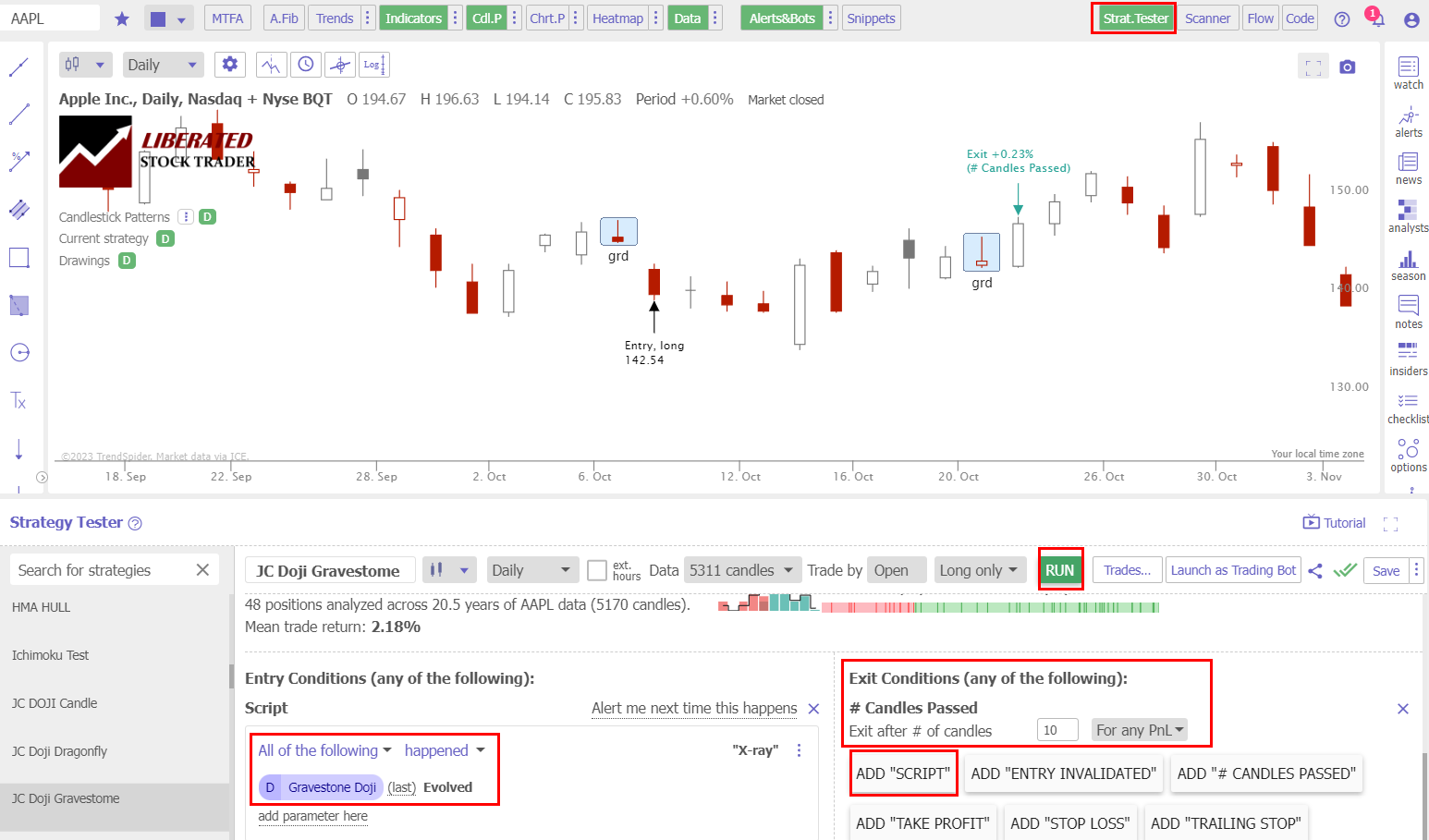
Backtesting Done with TrendSpider
Test Results
After conducting 1,553 trades on 575 years of data, we confirm the win rate to be 0.65% per trade. A 0.65% win rate means that trading a Gravestone Doji long will net you an average of 0.65% profit per trade if you sell after ten days. Conversely, short-selling a Gravestone Doji, you should expect to lose -0.65% per trade.
The percentage of Gravestone Doji winning trades was 57% versus 43% losing trades, higher than the 55.8% average performance across all candlestick types, in fact, third best of all. The Max Drawdown was -28.6%, versus the stocks drawdown of -59.3%, which shows less volatility than a buy-and-hold strategy.
The average winning trade was 3.8% over ten days, but the average losing trade was -3.6%; this represents a thin profit margin. The reward-to-risk ratio is 1.12, which is the fourth best of all candlestick patterns we tested, but significantly less than many of our backtested and proven chart patterns.
The Sharpe ratio, a measure of risk, is 0.01; a good investment should be higher than 1.0; thus, the Gravestone Doji is still a risky trade, compared to a buy-and-hold strategy. The Sortino ratio, also a measure of risk, of 0.31 is less than ideal as the target should be 2.
Test Results Summary
Ultimately for every long trade you make after a Gravestone Doji appears on a daily stock chart, on average, you should make 0.65% per trade after holding for ten days. This is a positive result and higher than the average of all candlestick pattern trades, which is 0.5%. However, the best candlestick for trading is the Inverted Hammer, with a win rate of 1.12%.
Table: Gravestone Doji Candle Performance Data
| Test Results | Gravestone Doji |
| Data Analyzed (Years) | 575.6 |
| # Trades | 1553 |
| Wins | 57.0% |
| Losses | 43.0% |
| Max Drawdown | -28.6% |
| Max Drawdown (Asset) | -59.3% |
| Average Win | 3.8% |
| Average Loss | -3.6% |
| Average Return Per Trade | 0.65% |
| Reward/Risk Ratio | 1.12 |
| Sharpe Ratio | 0.01 |
| Sortino Ratio | 0.31 |
My original groundbreaking research on the profitability and success rates of chart patterns and indicators relies on the best backtesting software available. If you want to craft an original, profitable trading strategy, dive into our exclusive review of the best backtesting software to find the perfect solution for your future trading needs!
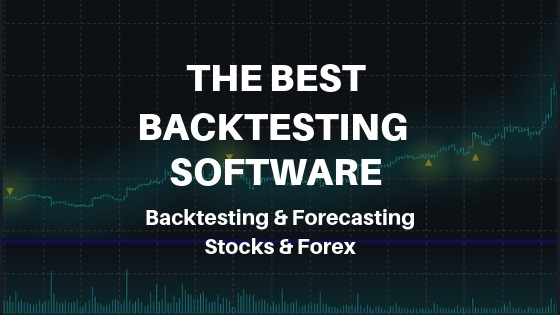
Does the Gravestone Doji Candle Work?
Yes, the Gravestone Doji does work in trading, but not as most traders think. The evidence of 1,553 trades suggests that the Gravestone Doji is not a significant bearish reversal pattern. The average win rate for a Gravestone Doji long trade is 0.65%. If you sell a Doji short, it will average a -0.65% loss.
Is a Gravestone Doji Candle Accurate?
Yes, a gravestone doji is quite an accurate pattern to trade long; it results in 57% of trades winning and 43% of trades losing, plus the average winning trade is 3.8% and the average losing trade is -3.6%. I believe the gravestone doji is only profitable on long trades because of the stock market’s inherent upward bias. Shorting Dojis results in an average loss of- 0.65%.
Can the Gravestone Doji Candle be used for Buy & Sell Signals?
Yes, the Doji can be used for buy and sell signals. In 1,553 trades, the Gravestone Doji buy signal was accurate 57% of the time. Its accuracy is far from perfect and should not be relied upon as the sole indicator for making trades.
Is a Gravestone Doji Candle Bullish or Bearish?
Our test results show that a Gravestone Doji is 57% bullish and 43% bearish. In any ten days following a Doji, the market moves up 57% and down 43%; this move is due to the market’s positive bias, not due to any predictive quality of the Gravestone Doji.
Is a Gravestone Doji Candle Reliable?
Yes, according to 1,553 tested trades, a Gravestone Doji is 57% reliable for bullish trades. The Doji has an accuracy rate of 57%, resulting in a 0.65% profit per trade. It has a low Sortino ratio of 0.31 indicates this is a risky trade.
Summary
In conclusion, the Gravestone Doji is one of the most profitable candlestick patterns; its bullish win rate of 57% results in an average profit per trade of 0.65%. It does not conclusively indicate market reversals; in fact, it is slightly bullish.
Although the Gravestone Doji may be profitable for long trades lasting over 10 days, it is risky for traders with a low risk tolerance. Therefore, it is important to carefully weigh the risks and rewards before deciding whether or not to trade this strategy. Finally, when trading any strategy, remember to always employ proper money management techniques so that you can protect your capital in case of an unexpected downturn.
All traders would benefit from investing in a comprehensive trading training course to help them make more informed decisions while managing their risks properly. So why not check out Liberated Stock Trader’s advanced investing course today?
You want to be a successful stock investor but don’t know where to start.
Learning stock market investing on your own can be overwhelming. There’s so much information out there, and it’s hard to know what’s true and what’s not.
Liberated Stock Trader Pro Investing Course
Our pro investing classes are the perfect way to learn stock investing. You will learn everything you need to know about financial analysis, charts, stock screening, and portfolio building so you can start building wealth today.
★ 16 Hours of Video Lessons + eBook ★
★ Complete Financial Analysis Lessons ★
★ 6 Proven Investing Strategies ★
★ Professional Grade Stock Chart Analysis Classes ★
FAQ
What is the best software for candle chart trading?
TrendSpider is the best software for trading candlestick patterns due to its integrated candle backtesting and pattern recognition. If you value a large community of traders sharing ideas and strategies, then TradingView is a great alternative.
What is a Gravestone Doji?
The Gravestone Doji is a candlestick pattern that reflects market indecision. It is identified by its resemblance to a gravestone, formed by the candle's open, close, and low prices being closely aligned. This pattern is supposedly bearish, but our testing disproves that theory.
How can I recognize a Gravestone Doji?
A typical Gravestone Doji candle will have an open, low, and close price nearly equal. If you're looking for this pattern on your charts, it's recognizable by its flat bottom that looks like a gravestone or upside down "T."
What software automatically detects candle patterns?
The leading candlestick chart pattern recognition software is TrendSpider, TradingView, and Finviz. See how they compare in our best pattern recognition software comparison review.
Why is the Gravestone Doji so popular?
The Doji candle is popular because its name and distinctive shape are easy to remember and identify for traders. According to our testing, the facts are that the Gravestone Doji is not popular because it is highly profitable.
Why is the Gravestone Doji candle important in trading?
The Doji candle is important in trading because traders believe it is significant. The results of our testing confirm it is the 3rd most important pattern in terms of profitability and predictive integrity.
Is the Gravestone Doji Candle reliable?
Yes, the Gravestone Doji candle is 57% reliable for predicting upward market direction in the 10 days following its appearance on a chart. Across 1,553 trades is averaged a 0.65% profit per trade.
What indicators should I use with a Gravestone Doji Candle?
It is advisable to use indicators such as relative strength index (RSI) , moving averages, and rate of change (ROC) in conjunction with Doji patterns. Our testing has proven these indicators highly successful.
What strategy should I use when trading Gravestone Dojis?
One strategy involves waiting until another candlestick forms following the initial Gravestone Doji to confirm any trend change before executing any trades. The ideal strategy would be to pair the Gravestone Doji other proven indicators.

